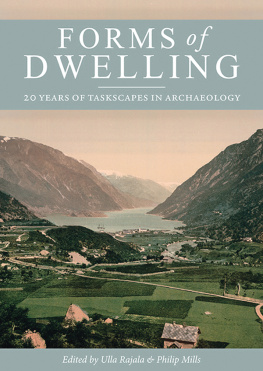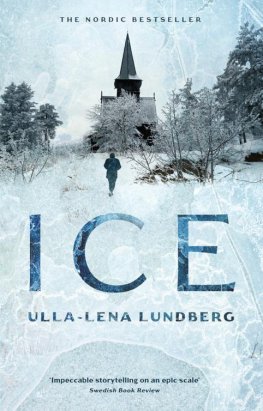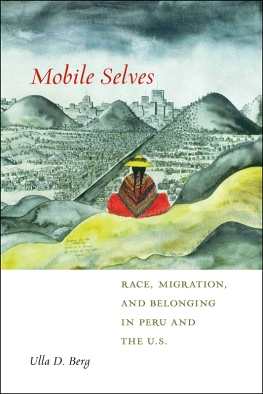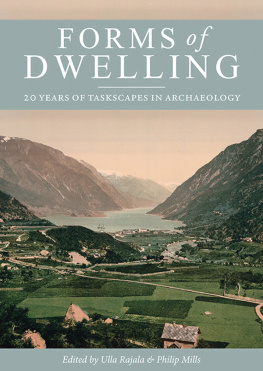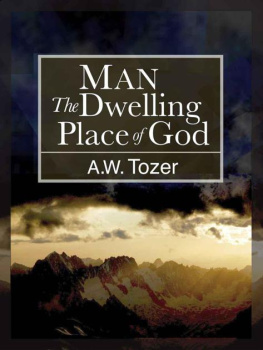Rajala Ulla - Forms of Dwelling
Here you can read online Rajala Ulla - Forms of Dwelling full text of the book (entire story) in english for free. Download pdf and epub, get meaning, cover and reviews about this ebook. year: 2017, publisher: Oxbow Books, Limited, genre: Romance novel. Description of the work, (preface) as well as reviews are available. Best literature library LitArk.com created for fans of good reading and offers a wide selection of genres:
Romance novel
Science fiction
Adventure
Detective
Science
History
Home and family
Prose
Art
Politics
Computer
Non-fiction
Religion
Business
Children
Humor
Choose a favorite category and find really read worthwhile books. Enjoy immersion in the world of imagination, feel the emotions of the characters or learn something new for yourself, make an fascinating discovery.
- Book:Forms of Dwelling
- Author:
- Publisher:Oxbow Books, Limited
- Genre:
- Year:2017
- Rating:4 / 5
- Favourites:Add to favourites
- Your mark:
- 80
- 1
- 2
- 3
- 4
- 5
Forms of Dwelling: summary, description and annotation
We offer to read an annotation, description, summary or preface (depends on what the author of the book "Forms of Dwelling" wrote himself). If you haven't found the necessary information about the book — write in the comments, we will try to find it.
Forms of Dwelling — read online for free the complete book (whole text) full work
Below is the text of the book, divided by pages. System saving the place of the last page read, allows you to conveniently read the book "Forms of Dwelling" online for free, without having to search again every time where you left off. Put a bookmark, and you can go to the page where you finished reading at any time.
Font size:
Interval:
Bookmark:

20 Years of Taskscapes in Archaeology
edited by
Ulla Rajala and Philip Mills

Published in the United Kingdom in 2017 by
OXBOW BOOKS
The Old Music Hall, 106108 Cowley Road, Oxford OX4 1JE
and in the United States by
OXBOW BOOKS
1950 Lawrence Road, Havertown, PA 19083
Oxbow Books and the individual contributors 2017
Paperback Edition: ISBN 978-1-78570-377-5
Digital Edition: ISBN 978-1-78570-378-2 (epub)
Mobi Edition: ISBN 978-1-78570-379-9 (mobi)
A CIP record for this book is available from the British Library and the Library of Congress
All rights reserved. No part of this book may be reproduced or transmitted in any form or by any means, electronic or mechanical including photocopying, recording or by any information storage and retrieval system, without permission from the publisher in writing.
For a complete list of Oxbow titles, please contact:
| UNITED KINGDOM | UNITED STATES OF AMERICA |
| Oxbow Books | Oxbow Books |
| Telephone (01865) 241249, Fax (01865) 794449 | Telephone (800) 791-9354, Fax (610) 853-9146 |
| Email: | Email: |
| www.oxbowbooks.com | www.casemateacademic.com/oxbow |
Oxbow Books is part of the Casemate Group
Front cover: A postcard with a view of Odda and Srfjorden from c. 18901900 (Library of Congress).
T IINA IKS
Archaeology, Faculty of Humanities,
University of Oulu, Finland
B OB C LARKE
Department of Archaeology, University of Exeter
A NNE D RAGESET
Department of Archaeology, History,
Cultural Studies and Religion,
University of Bergen, Norway
K ILLIAN D RISCOLL
UCD School of Archaeology,
University College Dublin, Ireland
M ATT E DGEWORTH
Archaeology and Ancient History,
University of Leicester
A NDREW F LEMING
Emeritus Professor of Archaeology
University of Wales Trinity St David
T OM G ARDNER
Department of Archaeology,
School of History, Classics, and Archaeology,
University of Edinburgh
P IRJO H AMARI
Archaeology, Department of Philosophy,
History, Culture and Art Studies,
University of Helsinki, Finland
T IM I NGOLD
Department of Anthropology, School of Social
Science, University of Aberdeen
A RJA K ARIVIERI
Department of Archaeology and Classical Studies,
Stockholm University, Sweden
P HILIP M ILLS
Archaeology and Ancient History,
University of Leicester
A STRID J. N YLAND
Archaeological Museum,
University of Stavanger, Norway
C AROLINE P HILLIPS
Anthropology, School of Social Sciences,
University of Auckland, New Zealand
U LLA R AJALA
Department of Archaeology and Classical Studies,
Stockholm University, Sweden
J ULIAN T HOMAS
Archaeology,
School of Arts, Languages and Cultures,
University of Manchester
C OLTON V OGELAAR
Department of Anthropology,
University of Victoria, Canada
A LEXANDER W ESTRA
USTC Archaeometry Laboratory,
University of Science and Technology of China,
Hefei, Anhui Province, China
A LEXANDER W OOD
Independent Researcher and Field Archaeologist,
Edinburgh, Scotland
20 years of taskscapes
Tim Ingolds seminal paper The Temporality of the Landscape was originally published in World Archaeology in October 1993. That paper was based on a presentation he had given in the session Place, time and experience: interpreting prehistoric landscapes, at the Theoretical Archaeology Group (TAG) conference at the University of Leicester in December 1991. Thus, it was fitting that TAG was also the venue chosen for a 20-year anniversary session of this articles publication. Organised by Philip Mills (University of Leicester) and Ulla Rajala (Stockholm University), the 20 years of taskscapes: from temporalities to ceramiscenes session took place in the Bournemouth TAG in December 2013.
The original idea for the 2013 session came from Rajala who had used the concept of taskscape in her PhD (Rajala 2002) and was interested in the development of the concept in the two decades since its inception. The concept of the taskscape and how it may be applied to incomplete archaeological datasets was very much at the heart of the idea of the ceramiscene that Rajala has been developing with Mills since 2008. Mills and Rajala were fortunate to get Tim Ingold himself to give the keynote paper, a revised version of which is published in this book ().
Due to the coincidence of Rajalas postdoctoral position at Stockholm University with the Nordic TAG held there in Easter 2014, Rajala and Mills organised a complimentary session Landscapes of temporalities and activities for that conference. Both the Bournemouth and Stockholm sessions were attended by a wide range of specialists with broad interests. The enthusiasm in the topic has grown, so we are able to invite a few papers that were not given at the original sessions to fill in lacunae in how Ingolds work has influenced archaeologists and anthropologists of different periods.
The importance of Ingolds paper can be assessed using Google Scholar (as Rajala did in November 2014). Ingolds original World Archaeology article was published in the thematic issue Conceptions of Time and Ancient Society. The same issue from October 1993 had several articles from a range of important researchers and archaeological theorists, but none of the other articles has had such a wide impact ( nicely demonstrates the volume of importance.
This introduction starts with an exploration of Ingolds initial idea of the taskscape, and the biographical context which helped form the concept. This is followed by an overview of how the concept has been used and developed over the last couple of decades. The next section details some current uses of the concept, especially Mills and Rajalas (2011a) ceramiscene and attempt to model archaeological interactions within the landcape using ceramic markers for the departed agents. Finally, there is an overview of the papers gathered for this book.
Table 1.1: The bibliometrics of the different articles published in the World Archaeology Volume 25, Issue 2 in Google Scholar (11 November 2014)
| Author | Citations |
| Rowlands | 215 |
| Ingold | 1111 |
| Murray | 21 |
| Criado Boado & Penedo Romero | 14 |
| Bailey | 23 |
| Mizoguchi | 71 |
| Barrett | 25 |
| Dietler & Herbich | 31 |
| Cooper | 6 |
| Hodder | 44 |
Ingolds landscapes and taskscapes
Ingolds (1993) thinking was based on the belief in the unity of archaeology and social anthropology. In a landscape context this approach makes a difference between permanent features and temporalities. Ingold (1993, 1689) considered a landscape and its terrain together as a permanence. As a background to a human life-cycle, landscape and its features are invariant, but they are not immune to change. Flowing rivers, climate and working humans, amongst other agencies, alter the landscape as time passes. Within this Ingolds taskscape is basically a socially constructed space of human activity (Van Hove and Rajala 2004), understood as having spatial boundaries and delimitations for the purposes of analysis (Ingold 1993, 1569; Mills and Rajala 2011a, 2). Taskscape, as well as landscape, is to be considered as perpetually in process and never finished rather than in a static or otherwise immutable state due to the passage of time. In his article, Ingold (1993) assessed the meaning of landscapes and their character as social constructs.
Next pageFont size:
Interval:
Bookmark:
Similar books «Forms of Dwelling»
Look at similar books to Forms of Dwelling. We have selected literature similar in name and meaning in the hope of providing readers with more options to find new, interesting, not yet read works.
Discussion, reviews of the book Forms of Dwelling and just readers' own opinions. Leave your comments, write what you think about the work, its meaning or the main characters. Specify what exactly you liked and what you didn't like, and why you think so.

